Krzywe
Borough of Dydnia , Brzozowski District, Podkarpackie Voivodship gmina: Dydnia, powiat: brzozowski, województwo: podkarpackieType of place
Roadside plot where the Fenig family house and inn were located.Information about the crime
“On 13 February 1942, Gestapo officers shot 8 Jewish people. Among the victims were:
Brand Szyja b. 1903
Fenig Izaak b. 12 March 1916
Fenig Mendel b. 15 May 1879
Fenig Mońka b. 8 October 1912
Fenig Pinkos b. 10 August 1910
Fenig Rajsa b. 11 November 1895
Fenig Runda born 12 April 1912
Piszko Marynka
The bodies of the murdered were buried in the cemetery in Krzywe in 1942”. (The Register of Killing Sites…, krośnieńskie province, 1983)
The information about burial in the cemetery is incorrect. The bodies of the victims were buried in the village, at the site of the execution next to the inn, which was run by one of the families. In December 2022, we ordered an archival query at the State Archive in Sanok. We found out that two Jewish families are listed in the register of inhabitants of the village of Krzywe from 1935-1944:
- Małka Amzel née Keller b. 1878 and her children: Malka Amzel zd. Keller b. 1878 and her children: Feiga b. 1906, Mala Handla b. 1908, Chaja Blima b. 1911, Markus Hersz b. 1914.
- Mendel Fenig b. 1879, his wife Rozalia née Brand b. 1885 and their children: Pinka b. 1910, Ruchcia b. 1912, Mala b. 1914, Izaak b. 1916, Gotha Estera b. 1920, Marjem Fenig and Aryja b. 1903.
In the autumn of 2022, we met a resident of the Dydnia borough who knew the story of the murdered Jewish family from her grandmother’s stories:
“It was certainly 1942. Officers from the Krzemienna blue police station came to the village of Krzywe in February 1942 and shot 8 people, members of the Fenig and Kebny families. The victims were buried on site in a mass grave. This site is unmarked to this day. Genowefa T. was an eyewitness. She precisely pointed out this place. Everybody knew about it. Since I was a little child, they used to say: the Jews are buried here. My grandmother even used to say: they are running over their legs. They are definitely buried here, there was no exhumation.
– Can you recall the name of this family?
– Fenig.
– Did they run an inn?
-Yes.
– Were there any children among the dead?
– Yes, yes, there were children.
– There were children too.
– Did they stay in their house in Krzywe or were they hiding somewhere? I am talking about this Jewish family. No, they lived at home. They were warned. There was a blue policeman operating here, who, was more cooperative, let’s say. He was just more humane, so to speak, and he warned them that they might be shot. But I think they didn’t understand. Maybe they didn’t realise that that someone would dare to come one morning and lead them behind the shed. That’s exactly what happened. They killed them right next to the house. They didn’t transport them anywhere. The locals had to bury them”. (Dynia, Autumn 2022)
From a memo written by an employee of the Institute of National Remembrance branch in Rzeszów on 2 July 2018, we learn the details of this tragic incident.
“[…] At that time, tragic events were already taking place in Krzywe. According to the testimony of local residents, the Germans arrived in the village by sleigh (the testimony of a blue policeman notes that the Germans came by car). A huge snowstorm made it impossible for the inhabitants to recognise the perpetrators. The Gestapo officers burst into the former inn, where the Fenig family was staying:
- Mendel Fenig with his wife Raisa (Rojza) both approx. 50-60 years old,
- Icek and Pinkas, teenage brothers,
- Malka and Runda, teenage sisters
- and relatives of the Fenig family, i.e. Marynka Piszko approx. 50-60 years old and the mentally ill Szyja Brand, over 20 years old.
The above-mentioned had lived in Krzywe for a long time, ran a shop and worked as farmers. According to witnesses’ testimonies, some people were murdered inside the house and others in the farmyard. Jews were killed with a shot to the back of the head. Witnesses saw bullet holes in the back of the skull. Szyja Brand tried to escape and was killed on the road towards Dydnia. The Gestapo officers shot him twice. […] The inhabitants of Krzywe were ordered to dig graves in the Fenigs’ garden”.
IDENTIFICATION OF THE GRAVE BASED ON NON INVASIVE RESEARCH
On April 26, 2023, a site inspection was carried out in the presence of a witness who precisely indicated the location (GPS: N 49°40.084′ E 022°11.484′) of the grave of 8 victims. The indicated place was examined using GPR (Mala X3M/Ramac 500 Mhz). 6 GPR profiles were collected with the names: KRZ10001, KRZ10002, KRZ10003, KRZ10004, KRZ10005, KRZ10006. The echograms marked disturbances of soil layers at approx. 1.5 mb – approx. 4.2 mb, depth of approx. 0.90 m below ground level (attached curved comparison of echograms KRZ10001- KRZ10006 – red arrows). The approximate area occupied by the grave is: 2.0 mb x 3.0 mb.
The terrain measurement is not helpful in this case.
No search of archival aerial photographs for this area was conducted.
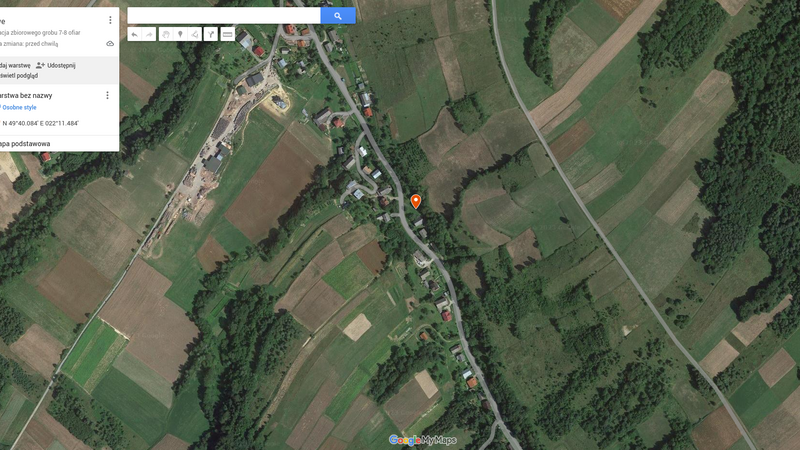 Krzywe fotografia satelitarna 1a
Krzywe fotografia satelitarna 1a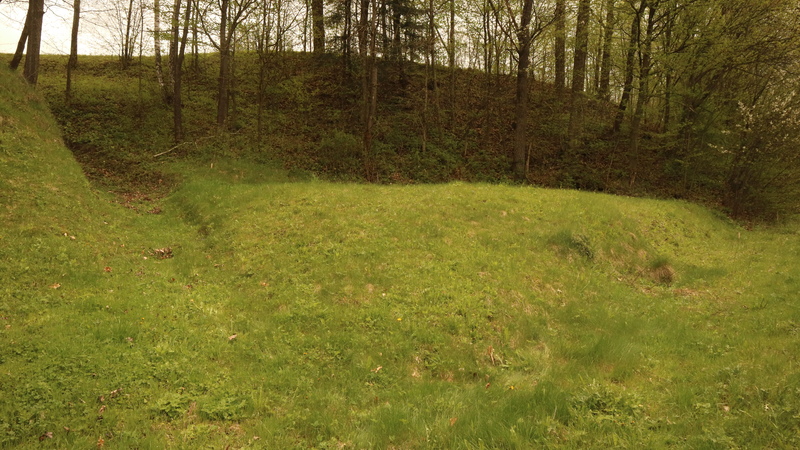 Krzywe fotografia 1 lokalizacji
Krzywe fotografia 1 lokalizacji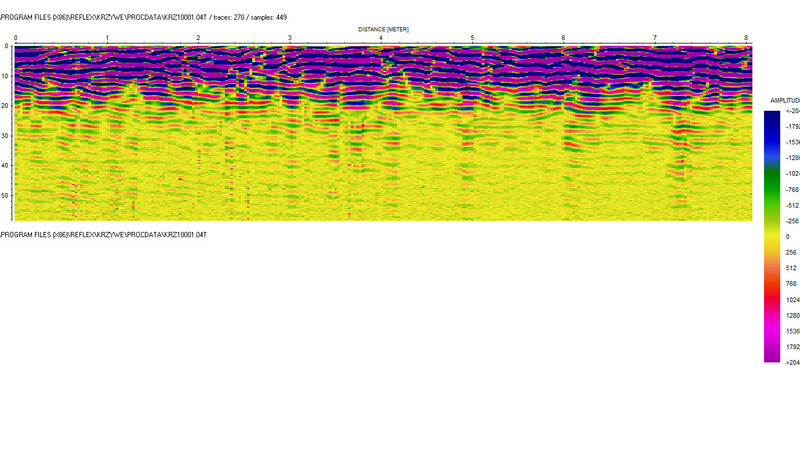 Krzywe KRZ10001
Krzywe KRZ10001Transkrypcje
Contact and cooperation
We are still looking for information on the identity of the victims and the location of Jewish graves in Krzywe. If you know something more, write to us at the following address: fundacjazapomniane@gmail.com.
Bibliography
The Register of Killing Sites and Crimes committed by the Germans in Poland between 1939 and 1945, krośnieńskie province, Warsaw 1983.
Recording of the Zapomniane Foundation (audio file), name: resident of Dydnia Municipality, key words: Jewish grave in Krzywe, interviewed by Anna Skiba, Dydnia, 16 November 2022.
Recording of the Zapomniane Foundation (audio recording), name: Kazimierz S., key words: Jewish grave in Krzywe, telephone number: interviewer Agnieszka Nieradko, Warsaw, April 18, 2023
Memo of 2 July 2018 written on the basis of the files of the former The Regional Commission for the Examination of German Crimes in Rzeszów, ref. Ds. 13/70 (archive of the Dydnia Municipal Office)
IPN Rz 191/214
IPN 191/189
We have collected the materials about this village thanks to the funding provided by the International Holocaust Remembrance Alliance as part of the project “The rural Holocaust. Collecting and safeguarding the never recorded testimonies 100 forgotten Jewish graves 2021-2022”. The materials for this website were developed, digitized and made available as part of the project “Development of a digital archive of Jewish war graves outside the extermination camps and educational use of archive resources” thanks to funding from the Minister of Culture and National Heritage from the Cultural Promotion Fund.
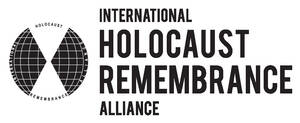
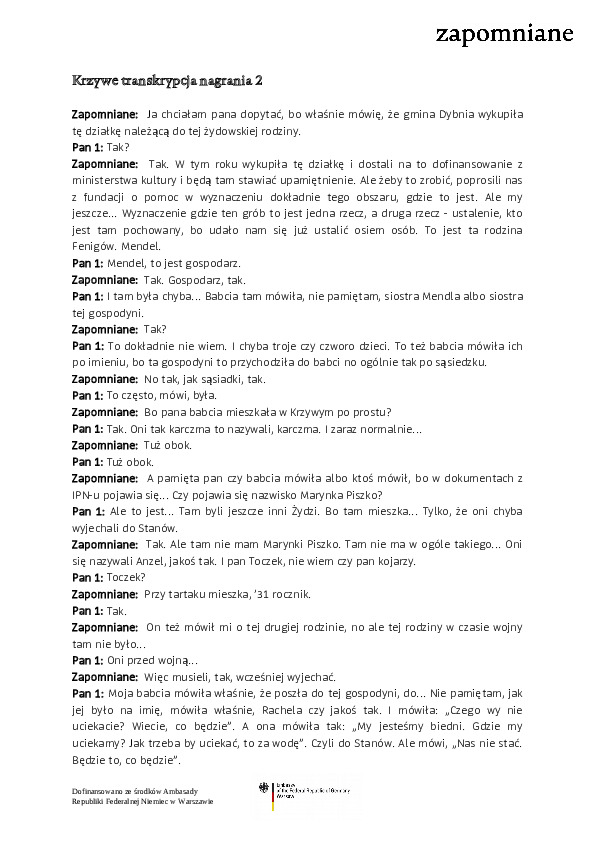 Krzywe transkrypcja 2
Krzywe transkrypcja 2